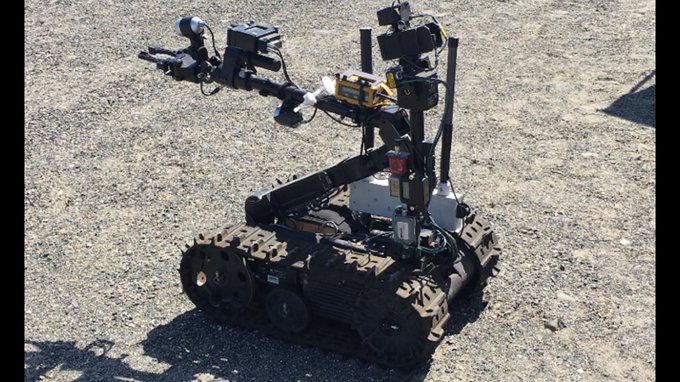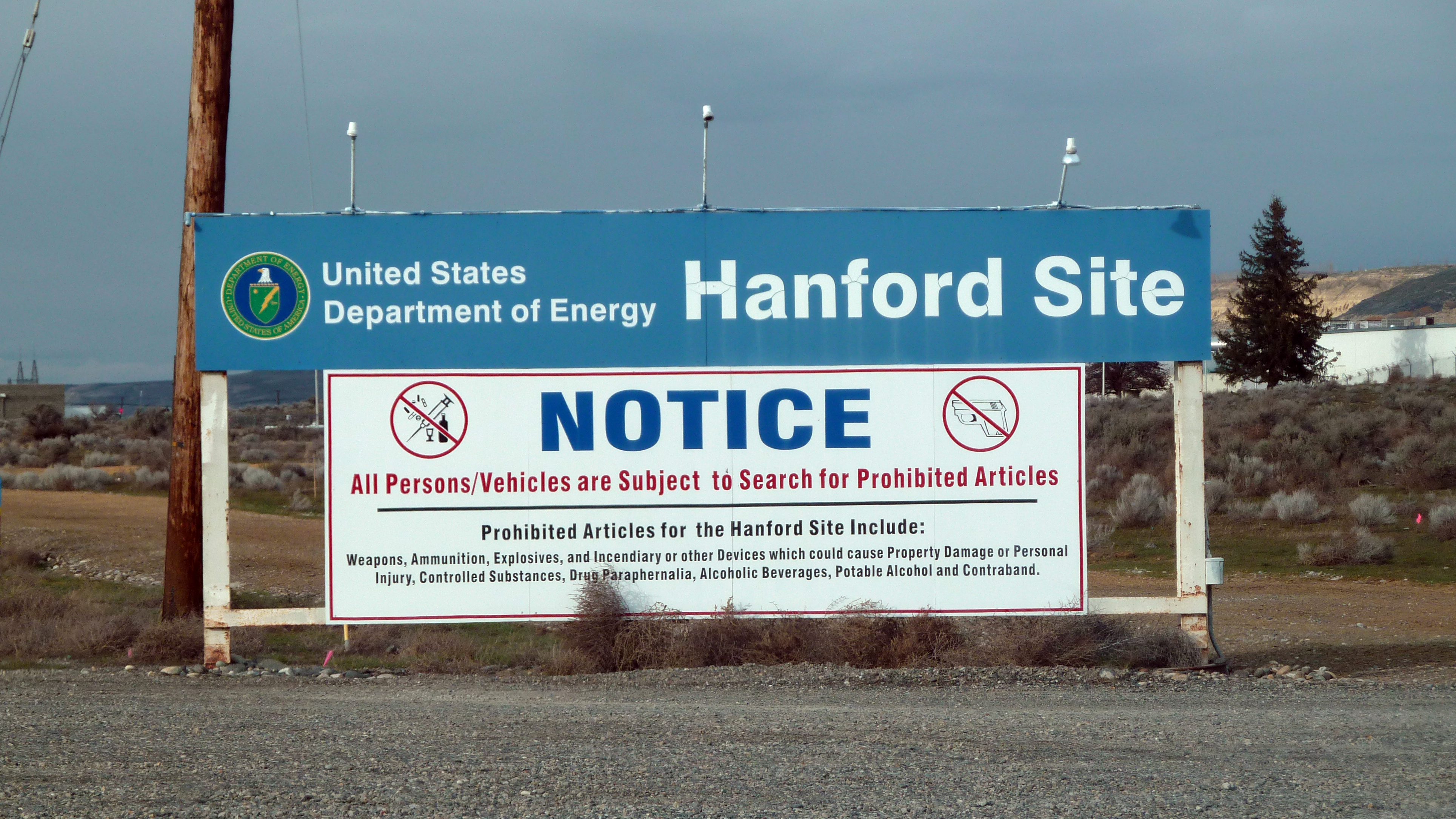
A sign warns visitors of searches for prohibited materials as they near the Hanford nuclear site in Hanford, Washington the most contaminated nuclear site in the Western hemisphere, seen here on March 17, 2011. (Getty)
Workers were told to “take cover” after an emergency alert was issued at the Hanford nuclear site in Washington state after a railroad tunnel containing contaminated materials near a former chemical processing facility collapsed, the Department of Energy says.
No release of radiation has been detected and there were no workers injured or in the tunnel at the time of the collapse, Randy Bradbury, a spokesman for the Washington state Department of Ecology, told the Associated Press.
“There are concerns about subsidence in the soil covering railroad tunnels near a former chemical processing facility. The tunnels contain contaminated materials,” the U.S. Department of Energy said in a statement.
Workers who were close to the tunnel when it collapsed have been evacuated, while others farther away have been told to stay inside, secure ventilation and refrain from eating or drinking, authorities said.
“There are no reports of injuries, no reports of radiological release. I would underscore this is confined to a small area of the Hanford site, “Destry Henderson, deputy news manager for the Hanford Joint Information Center, told NBC News. “I can confirm we are investigating a small area of soil that had sunken. This soil covers a tunnel used to access a former chemical processing facility.”
The collapse occurred near a plutonium uranium extraction facility, known as PUREX, in the center of the sprawling Hanford Nuclear Reservation site, the AP reports. The site was called the “Most Toxic Place in America” by experts who spoke to NBC News last year.
Here’s what you need to know:
1. The Tunnel Was Full of Contaminated Materials, Including ‘Hot Radioactive Trains’ Used to Transport Fuel Rods
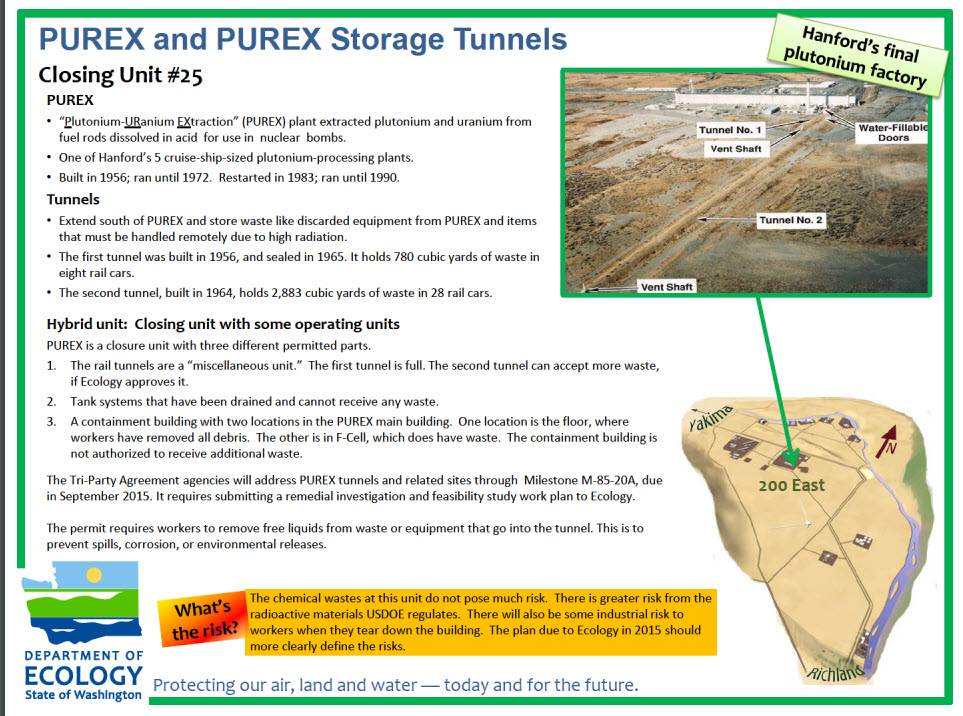
(Department of Energy)
The tunnel where the collapsed occurred is connected to a plutonium uranium extraction plant building, KING-TV reports. The graphic above includes details from the Department of Energy about the tunnels and the PUREX plants. According to KING the tunnel “was full of highly contaminated materials such as hot radioactive trains that transport fuel rods.”
According to the Department of Energy alert, “soil has subsided in an area approximately 20 feet by 20 feet over one of the tunnels next to the Plutonium Uranium Extraction Facility, also known as PUREX. There is no indication of a release of contamination at this point.”
The emergency alert was issued at 8:26 a.m. local time.
Video obtained by KING-TV shows workers getting to cover as an alarm sounds and alert message plays:
“The U.S. Department of Energy (DOE) Richland Operations Office activated the Hanford Emergency Operations Center at 8:26 a.m., after an alert was declared at the 200 East Area. There are concerns about subsidence in the soil covering railroad tunnels near a former chemical processing facility. The tunnels contain contaminated materials,” the Department of Energy said.
“The Hanford Fire Department is on scene and updates will be posted as they are available. Workers in the vicinity are still being sheltered as a precaution,” the Department of Energy said. “Responders are getting closer to the area where the soil has subsided for further visual inspection.”
The alert said that facility personnel have been evacuated, “as a precaution, workers in potentially affected areas of the Hanford Site have gone indoors” and “access to the 200 East Area of the Hanford Site, which is located in the center of the Hanford Site, has been restricted to protect employees.”
A spokesperson for the Department of Energy said Secretary Rick Perry has been briefed about the incident.
“Everyone has been accounted for and there is no initial indication of any worker exposure or an airborne radio logical release,” the statement said. “The Department will continue to monitor this closely and will provide information and updates as they become available.”
Washington Governor Jay Inslee said in a statement, “This is a serious situation, and ensuring the safety of the workers and the community is the top priority. Our understanding is that the site went into immediate lockdown, in which workers were told to seek shelter, and all access to the area has been closed.”
Inslee said the Department of Energy informed his office of the tunnel breach and the White House reached out to him as well. The governor said “Federal, state and local officials are coordinating closely on the response, and the state Department of Ecology is in close communication with the U.S. Department of Energy Richland Office. My office is in close communication with these agencies and directly with Department of Energy headquarters in DC. We will continue to monitor this situation and assist the federal government in its response.”
2. The Facility Was Built in 1943 as Part of the Manhattan Project & Is the Most Contaminated Nuclear Site in the U.S.
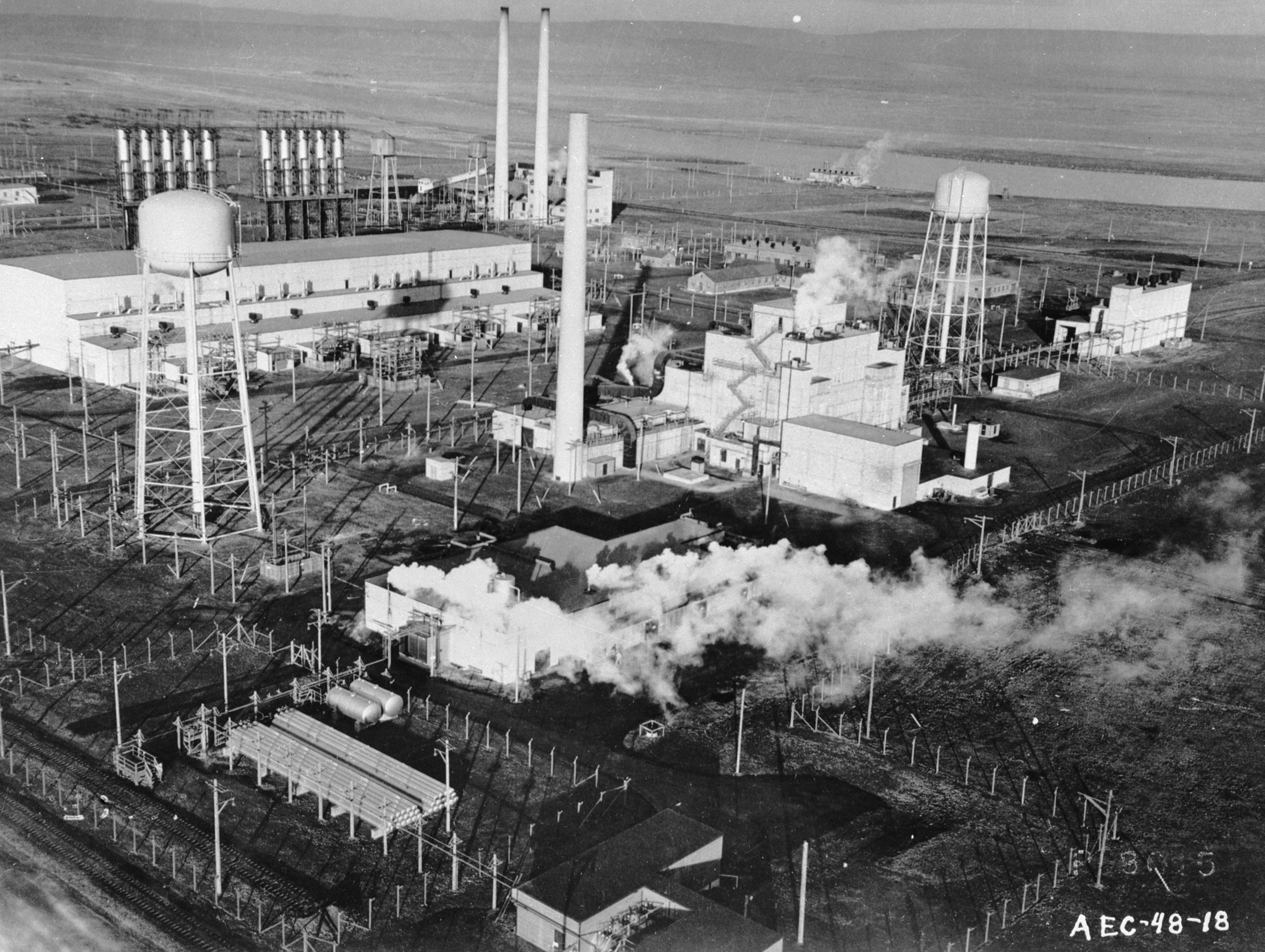
The American Atomic Energy Commision’s plutonium production plant at Hanford, Washington circa 1955. (Photo by Evans/Three Lions/Getty Images)
The Hanford facility, located along the Columbia River in rural south-central Washington, was used to make plutonium for nuclear weapons and is considered the most contaminated nuclear site in the United States. It was built in 1943 as part of the Manhattan Project and is about half the size of Rhode Island at 586 square miles. The site was used to produce more than 65 percent of the plutonium for the country’s nuclear arsenal, including the bombs used in Japan, according to the Associated Press.
Plutonium production at the site was fully halted in 1987, and cleanup efforts have been underway for nearly three decades. There are about 9,100 workers employed at the site, which contains about 55 million gallons of dangerous radioactive waste. It also includes thousands of tons of nuclear fuel, solid radioactive waste, thousands of contaminated buildings and contaminated soil and groundwater, according to the AP.
The site is located in Benton County, Washington not far from the Tri-Cities area of Richland, Kennewick and Pasco, which is home to about 230,000 people.
According to the Associated Press, the cleanup will take several more decades and funding will need to be increased to about $3 billion a year to meet deadlines.
“This is the largest and most complex environmental remediation project in the nation,” the Washington state Congressional delegation said in a statement earlier this year. “Any lapses in funding for the site puts workers and communities at risk.”
According to a recently released Department of Energy fact sheet, made public ahead of a meeting about the cleanup progress scheduled for May 17, there is an “82-square-mile footprint of active cleanup remaining.” Officials said all spent fuel has been moved to dry storage, all leftover plutonium in the finishing plant has been stabilized and shifted off site and 984 waste sites have been remediated, with 428 facilities demolished and 18 million tons of soil and debris removed, since the cleanup began in 1989.
The Department of Energy also said 16 billion gallons of contaminated groundwater has been treated, with 344 tons of contamination removed. About 12,417 cubic meters of plutonium-contaminated waste buried or stored on site has been removed. There was about 15,000 cubic meters on the site when the cleanup began.
3. The Collapse Was Possibly Caused by Vibration During Road Work Being Done Near the Tunnel

A safety inspector enters the processing room at the Waste Receiving and Processing facility (WARP) on the Hanford Nuclear Reservation June 30, 2005. (Getty)
A source told KING-TV’s Susannah Frame that vibration caused by road work being done near the tunnel may have led to the collapse. Photos from the scene showed a hole in the ground above the tunnel.
“The subsidence of soil was discovered during a routine surveillance of the area by workers. The tunnels are hundreds of feet long, with approximately eight feet of soil covering them. The depth of the subsidence of soil appears to be into the tunnel,” the Department of Energy said.
There are concerns that radioactive materials may have ended up in the soil above the tunnel.
“Several rail cars used to transport the irradiated fuel rods from the Hanford nuclear reactors to the processing canyons are temporarily buried inside a tunnel near PUREX as a result of becoming contaminated,” the Hanford site’s website says.
4. Some Have Called it a Crisis & One Worker Says It is ‘the Biggest Deal I’ve Seen at Hanford in My 35 Years Here’
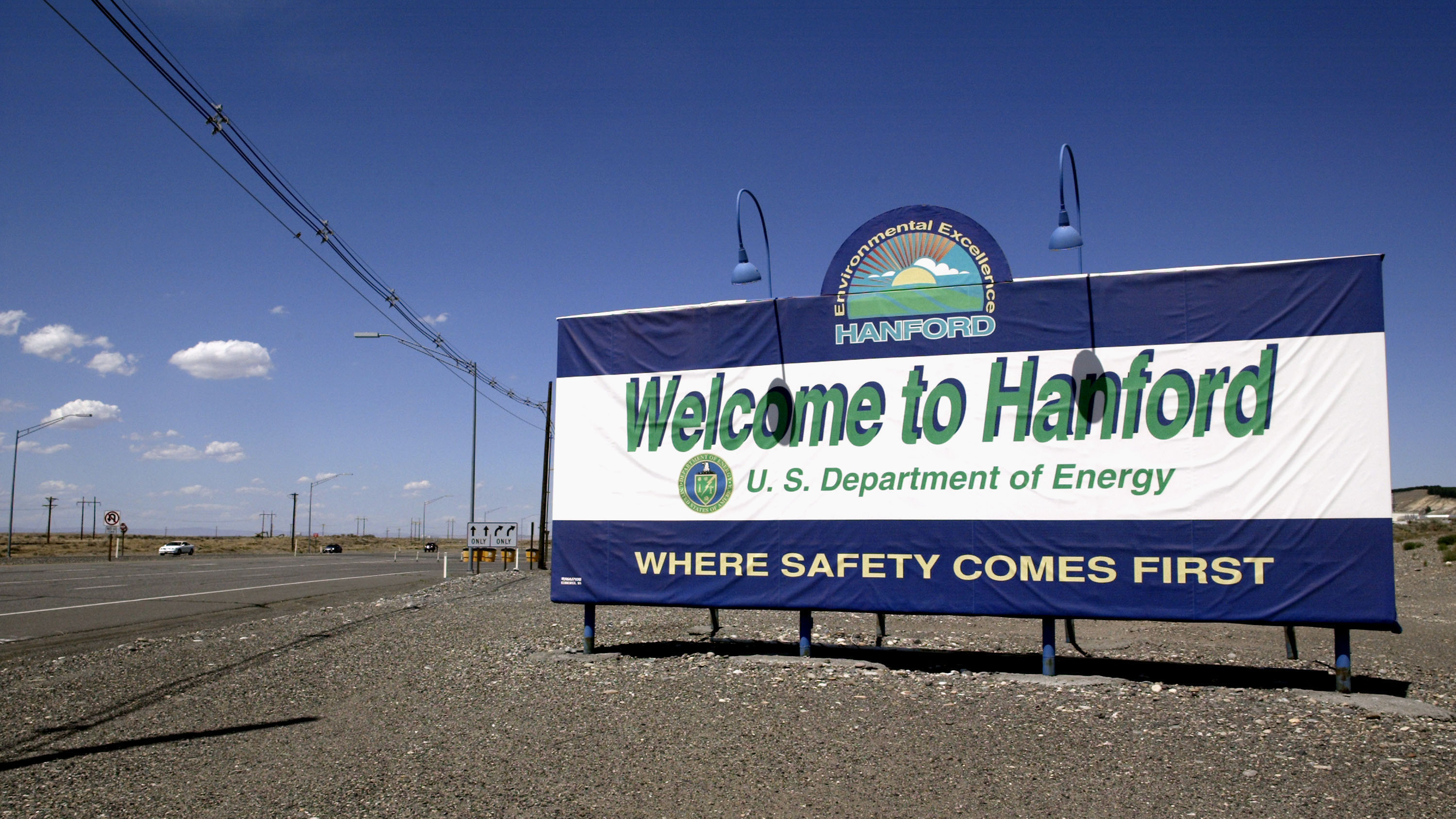
(Getty)
A watchdog group has called the incident at the Hanford Site a “crisis,” KING-TV reports.
Hanford Challenge is an organization that works to “hold Hanford accountable,” to ensure it “is a site that performs its cleanup obligations in a transparent, efficient, creative manner at a reasonable cost to the taxpayer and in a fashion that protects health and safety, the environment, and future generations.”
A worker at the site told KING, “This is the biggest deal I’ve seen at Hanford in my 35 years here.”
5. New Energy Secretary Rick Perry Says He’s Committed to Prioritizing the Cleanup of the ‘Dangerous, Polluted’ Site
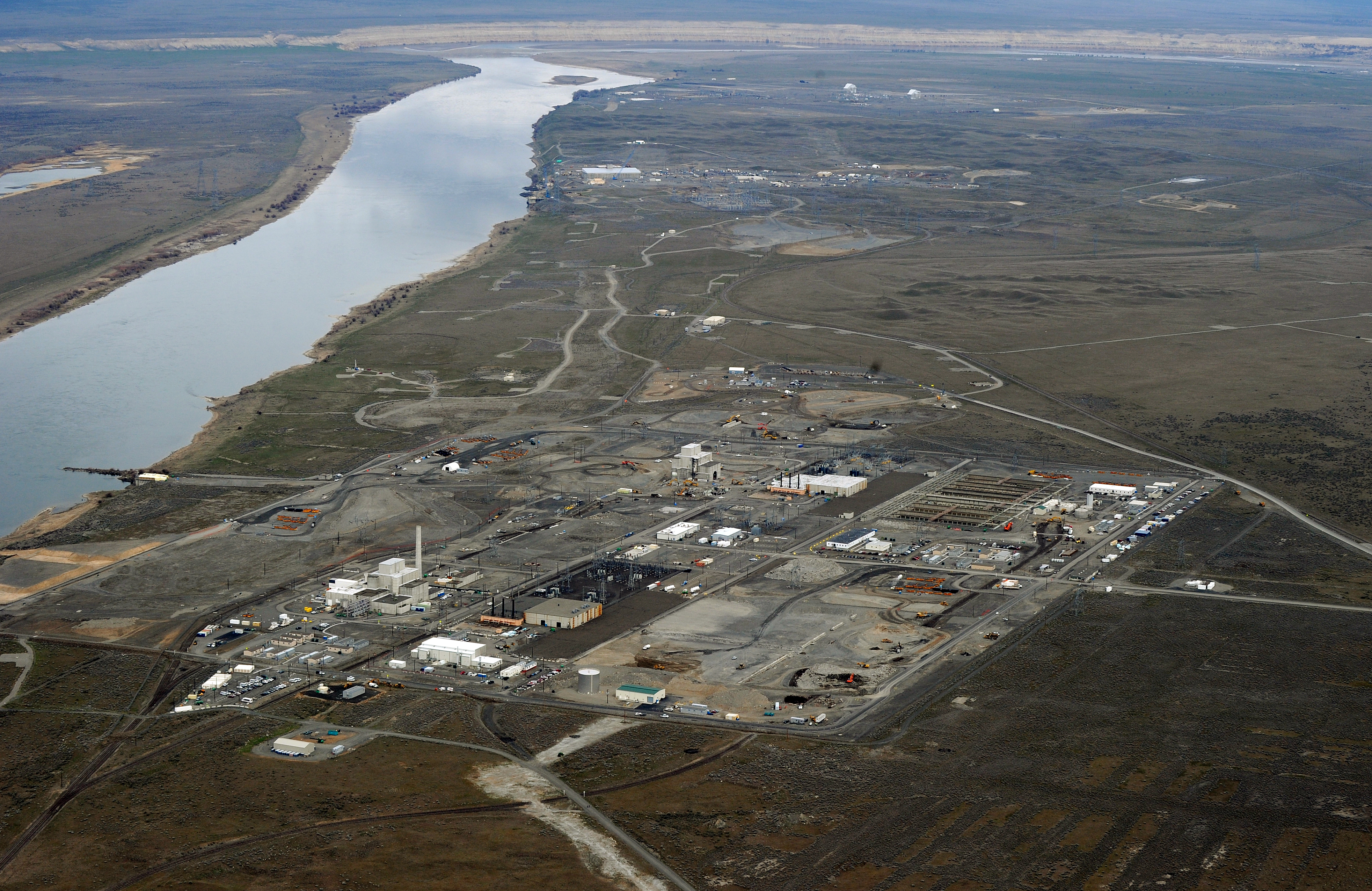
The Hanford site in 2011. (Getty)
New Department of Energy Secretary Rick Perry was quizzed about the Hanford Site during his confirmation hearing in January, the Seattle Times reported. Senator Maria Cantwell, a Washington Democrat, asked if he would see to the cleanup at the site.
“I am committed to working with you in prioritizing what is one of the most dangerous, polluted sites we have in the country,” Perry answered. “The country’s commitment to do this has been a failure, from my perspective.”
Perry told Cantwell he planned to visit the site and talk with labor unions about the site’s safety, the newspaper reported.
“Maybe one of our most important duties is making sure the men and women working on a very dangerous site have the appropriate protection they deserve,” he said.
Also in January, the Washington state Congressional delegation asked President Donald Trump to make cleanup of the Hanford site a priority.
“This work is essential to protecting the health and safety of the Tri-Cities community, the Columbia River, Washington state, and our nation from waste that was created from over 40 years of nuclear weapons production,” a bipartisan letter from the state’s senators and all 10 members of the House, said. “A critical component to this support is proper funding levels.”

